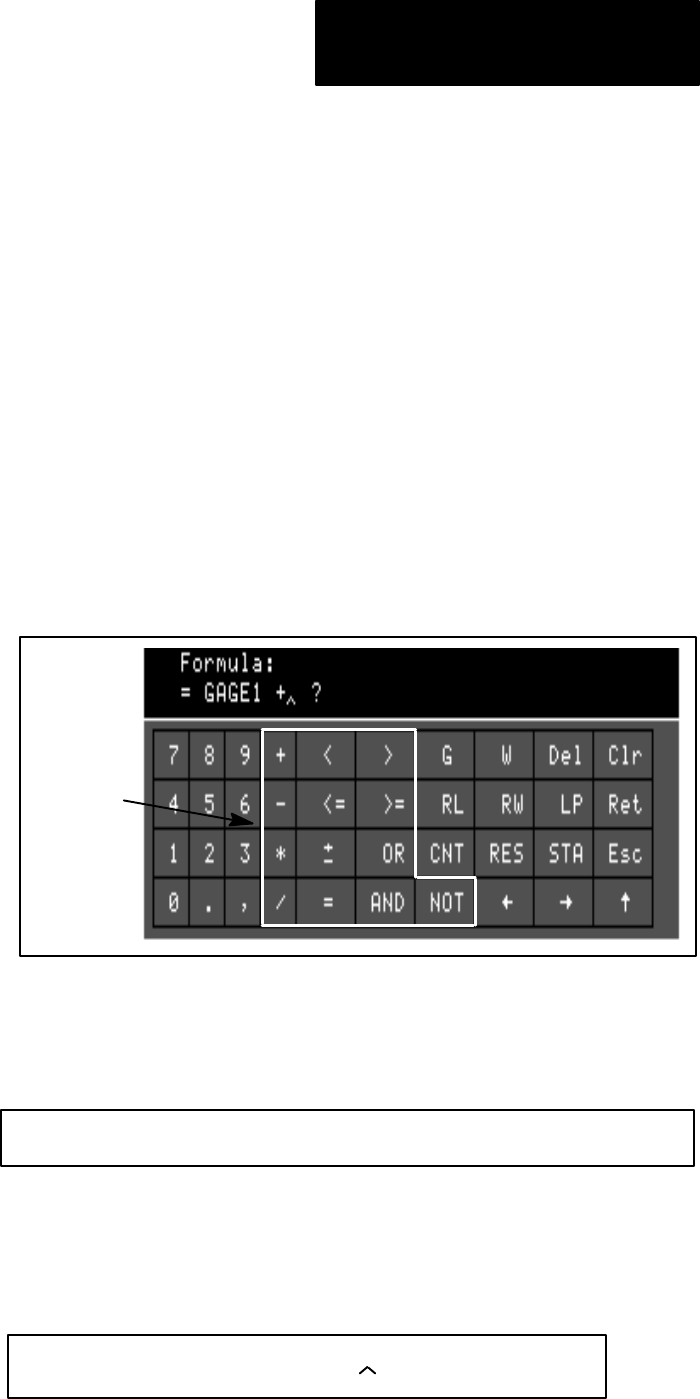Owner manual
Table Of Contents
- 5370-ND016, Bulletin 5370 Color CVIM Module MATH-PAK Option User's Manual
- Important User Information
- Table of Contents
- 1 - Using This Manual
- 2 - Introduction to the MATH-PAK Option
- 3 - Installation
- 4 - Defining Formulas
- 5 - Analysis Functions and Runtime Displays
- A - Color CVIM Communications with MATH-PAK Installed
- Index
- Back Cover

Chapter 4
Defining Formulas
4–17
Operators
With respect to MATH-PAK formulas, an operator is a symbol (such as “+”
or “–”) or term (such as “AND” or “AV G ”) that represents a mathematical or
logical operation that is to be performed. Table 4.D, starting on page 4–18,
lists the operator keys, and describes the corresponding operators.
To enter a particular operator in the formula:
• Pick the appropriate operator key on the formula entry keyboard – when
you pick an operator key, the corresponding operator symbol appears in
the display area of the keyboard (see Figure 4.7).
Note: Additional operators are located on the secondary key set, which is
accessed by picking the ↑ key on the initial key set.
Figure 4.7 Operator keys (initial key set)
Initial
key set
Operator
keys
Prioritizing operations: Place parentheses around an operator and its
operand(s) in order to prioritize that operation – that is, the result of the
operation(s) in parentheses can be used as an operand by another operator.
“Nesting” is possible, too – this allows a parenthetical portion of a
formula to be contained within another parenthetical portion.
ARC TAN ((GAGE2 – GAGE3) / (GAGE2.3 – GAGE4))
Listing operands: Some operators require that you enter one or more
operands in a parenthetical list following the operator. In these cases,
when you pick the operator, the “open” parenthesis is displayed along
with the operator. After you list the operands (separated by commas), you
then enter the “close” parenthesis.
AVG( GAGE1, GAGE2 )










